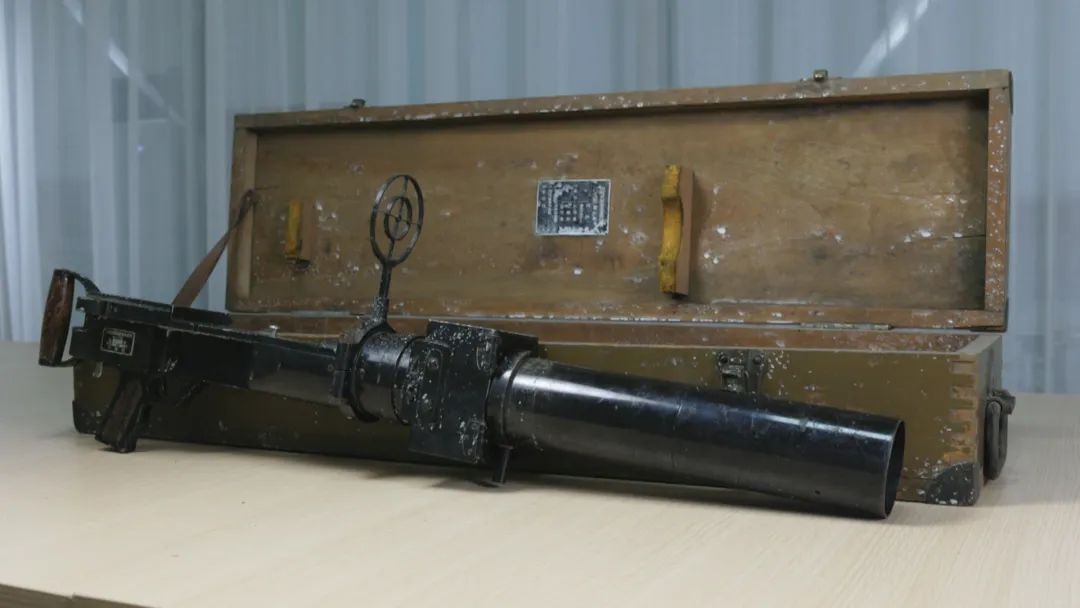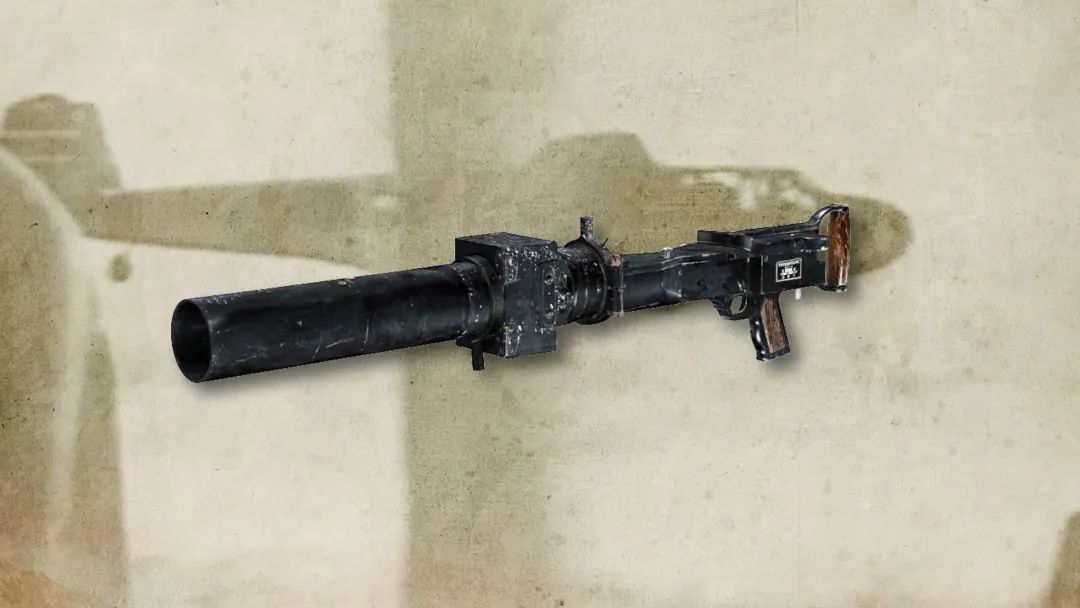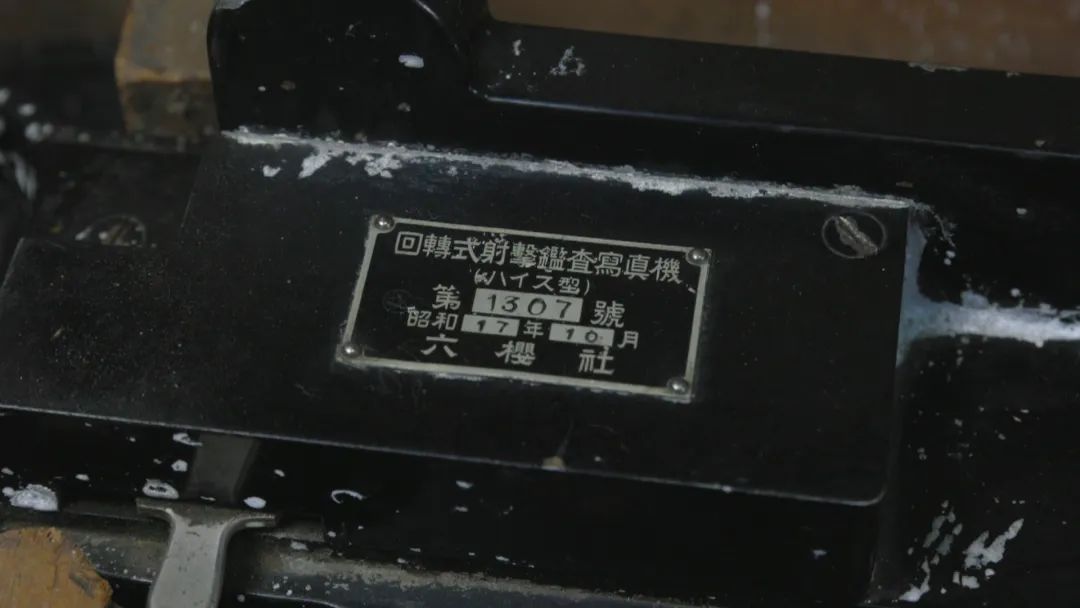The evidence of this Japanese invasion of China is for the first time exhibited
Author:Guangming Daily Time:2022.09.18
On September 18th, on the 91st anniversary of the outbreak of the September 18th Incident, the Northeast Anti -Federation Museum exhibited the revolving shooting photo machine used by the Japanese invaders for the first time.

The photo machine is a military training equipment like heavy machine guns. The surface is sprayed with dark paint, 97 cm long, and the diameter of the tube is 8.3 cm. The mouth is equipped with a camera lens, and there are wooden handles on the tail. The wooden boxes of the loading machine are printed on the words "Rotary Shooting Bymnarian Photo", "No. 1307", "October of Showa 17" and "Six Sakura Club". It is identified that it is an instrument used by the Japanese Army Aviation Forces for shooting and combat, which has empirical value for studying the history of Japanese imperialist invasion.


Rotary shooting test machine is a photographic gun used by the Japanese army aviation, imitation British -style "Head" -style photo gun, which Japanese call it "Hatham". The "Head" -style shot gun was a gun training for British aviation training during the World War I. Because the aviation bomb was expensive at that time, this kind of photo gun was used to shoot practical shooting exercises during training to test the precision of weapons. During World War II, the use of photographic guns was further expanded and was put into use during air combat. At that time, the fruits of air combat were extremely difficult to observe with the naked eye. The characteristics of the gun can accurately observe the air combat situation.
In 1933, the Japanese invaders built the Laibin Railway and set up a small station near Harbin Porchon Tun, saying that the "Coro Station" was called. In 1935, the Ishii troops began to survey the land at 4 kilometers north of the Court of Couple Station. In 1936, the "Kanto Army Epidemic Prevention Department" was formally established and based on bungalows. In 1938, the Bacteria Bacterial Base was basically completed. On June 30, 1938, after the Japanese Kanto Army issued a "1539 of the establishment of a special military area for the Corporation", the Bingfang Town and the Japanese Air Force 837th Army Camp area and the seven -three -troops camp constituted a special military area, with an area of 120 120 Square kilometers. In addition, the Japanese gendarmerie team, pseudo -police officer and other fascist ruling institutions are also available here. The Seventh -three Army is the Japanese Bacterial Weapon Research Center and the Bacterial War Command Camp.
It is speculated that the rotary shooting test machine was used during air shooting training in these garrisons. There are sights and triggers on the photo machine. You can accurately see the bounce point and hit rate by reflector. If necessary, you can shoot the shooting process through the trigger to link the shooting process, and observe the accuracy of the shooting with the rinse negatives.
In August 1945, Japan was defeated and surrendered, and the Japanese garrison in Penfang Town, Harbin fled. Many warehouses and military supplies and daily necessities in the barracks were too late. Guan Mingxi, who lives near the bungalow, retrieved a wooden box in the barracks. When he opened it home, he looked like a cannon. He was afraid of his heart and did not dare to say it.
In 1996, the Northeast Martyrs Memorial Hall and News Media jointly organized cultural relics collection activities. During this period, Guan Mingxi's daughter Guan Fenglan provided a clue, saying that there was a weapon left by a Japanese army when he invaded China. Cultural relics collected by the Northeast Martyrs Memorial Hall from Guan Mingxi's residence -Hongqi Manchu Township Village, Hongqi Manchu Township, Nangang District, Harbin, collected this evidence of this Japanese invasion.
(Guangming Daily All Media Reporter Zhang Shiying)
Source: Guangming Daily All Media Reporter Zhang Shiying
Picture: Northeast Martyrs Memorial Hall
Editor -in -chief: Wang Yuanfang
Edit: Zhang Yongqun Changying
- END -
In the past ten years, Star Play, hundreds of "stations" are Yousheng!

Editor -in -chief 丨 Li Yuan, Shen SuResponsible editor 丨 Fu Tao and Zhu Enrong (...
Taiwan expert: "Too expensive", can't stop it

After the Speaker of the US House of Representatives Plogsi visited Taiwan, the Ro...